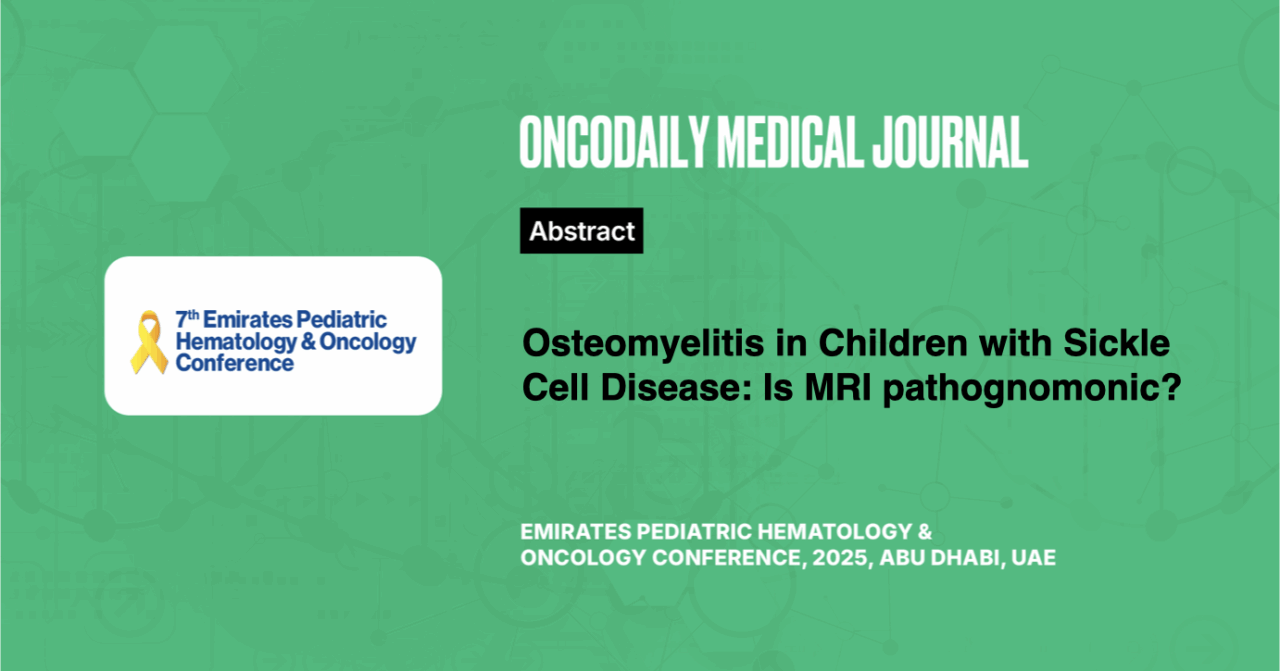Osteomyelitis in Children with Sickle Cell Disease: Is MRI pathognomonic?
Abstract
Introduction: Sickle cell disease (SCD) is one of the most common genetic blood disorders in Oman, with incidence around 6% of the population. SCD patients are at high risk of getting osteomyelitis (OM). The method of choice to diagnose OM is obtaining a positive blood culture and bone/joint biopsy. However, a negative blood culture does not exclude the diagnosis of OM and bone biopsy is an invasive procedure that is not routinely performed for each patient. Standard Magnetic Resonance Imaging (MRI) is recognized as the study of choice in confirming OM in normal populations and has high sensitivity and specificity according to previous reports. However, in patients with SCD because of significant bone infarcts, it’s difficult to differentiate from bone infections with an MRI sensitivity and specificity of around 82% and 75% respectively as reported. Ambi-directional study done to evaluate the role of clinical, laboratory and radiological parameters in establishing the diagnosis of OM in children with SCD.
Methodology: Fifty-one SCD patients with a mean age of 9 years were recruited. The inclusion criteria of our study are patients with SCD aged from 6 months to 18 years, suspected to have OM, and involvement of limb or joint. Clinical, laboratory, and radiological findings were collected and grouped into 2 groups; OM vs VOC patients.
Results: In our study, the sensitivity of MRI alone was 29.6% in detecting OM. Cortical destruction was found in only 12.5% of patients who had MRI which confirms the diagnosis of OM. Combined with Clinical and laboratory data the likelihood of diagnosing osteomyelitis increases significantly (Figure 1).
| A | B |
|---|---|
| Definitive OM | Possible OM with microbiologic confirmation (from blood or tissue) OR cortical destruction on MRI OR drainage of purulent fluid from surgical intervention (Tissue diagnosis) OR later development of chronic osteomyelitis |
| Possible OM | Fever with tenderness and swelling at the site of suspected infection AND abnormal inflammatory marker (CRP > 50 OR WBC >15) AND Persistence of skeletal symptoms > 1 week without microbiologic confirmation, cortical destruction, or drainage of purulent fluid or later development of chronic osteomyelitis |
| Unlikely OM | Suspected OM based on fever, tenderness and swelling, at the site of pain, but otherwise does not fulfill the criteria for definitive or possible OM |
Conclusion: In SCD patients, it is usually difficult to distinguish between OM and VOC. In many cases, the MRI findings were either inconclusive or gave a wrong diagnosis. Combining clinical, laboratory, and radiological data might increase the likelihood of diagnosing OM in these patients.





